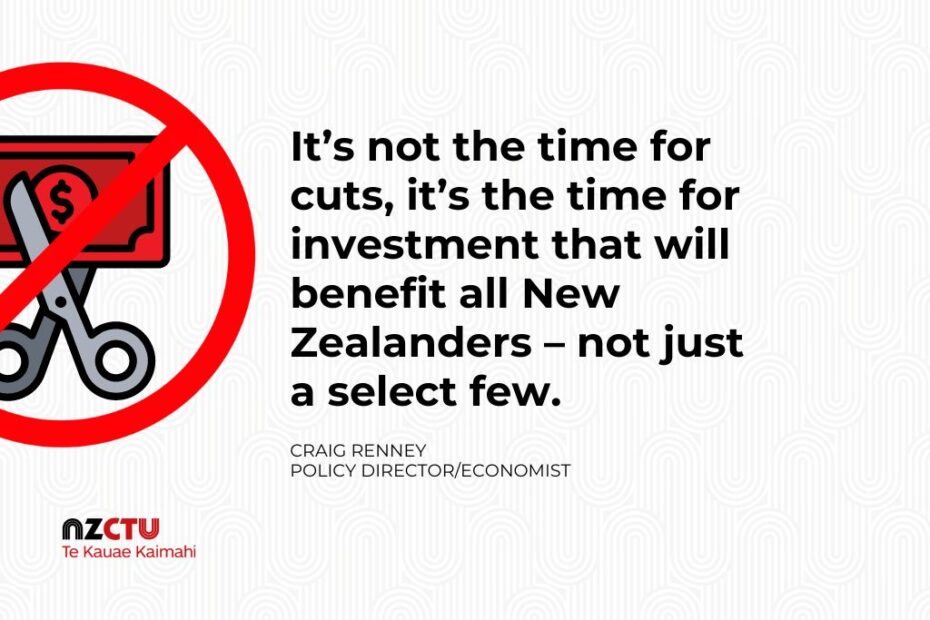GDP numbers released today show that the economy shrank into a technical recession with the economy declining by -0.1% in the December 2023 quarter, following a -0.3% decline in the September quarter. GDP per capita also fell by 0.7%, continuing its recent run of declines.
7 out of 16 economic sectors saw annual declines in output, including most of the goods producing sectors like manufacturing and construction. Public administration increased its output, caused mainly by the general election during this period. On a quarterly basis, New Zealand now finds itself alongside the UK in having negative growth. Australia (+0.2%), the US (+0.8%), Japan (+0.1%), and the OECD average (+0.3%) all saw positive economic growth.
“This data confirms what many other economic indicators have been showing – that the economy is slowing, and growth is well below its historical trend. That should worry working people, as lower economic growth generally leads to higher unemployment and lower wage growth” said CTU Economist Craig Renney.
“The data illustrates the current weakness in the economy. While we shouldn’t over interpret one datapoint, the broader economic data points to a stronger case for some timely investment in the economy. This would both tackle our chronic infrastructure gap, enhance our low productivity, and both support business investment and boost flagging demand. The worst way to achieve that would be with tax cuts.
“This should act as a wake-up call about our economic direction. Those countries with an active economic plan based on investment – like the US – are seeing strong economic growth and employment growth. This Government is heading in the opposite economic direction. Central government expenditure in New Zealand fell -2.2% on average across the past year, so excuses about government spending shouldn’t hold any weight.
“This is not the time for cuts, it’s the time for investment that will benefit all New Zealanders – not just a select few,” said Renney.
